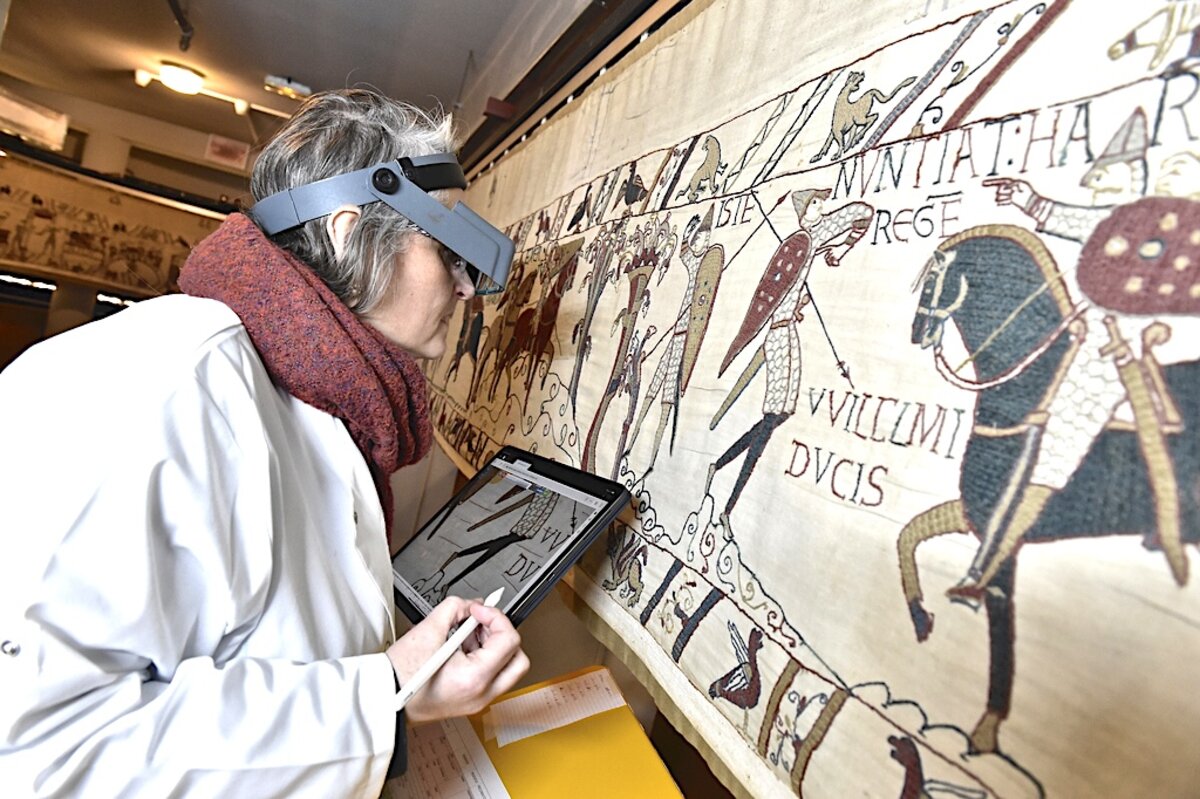When art sews friendship between foes
Loading...
In some 900 years, might the Russians and Ukrainians exchange a grand work of art about their current war, as a lasting treasure of a violent past that eventually yielded to peace?
Might the Israelis and Palestinians do the same? Perhaps the Indians and Pakistanis? Or any other peoples in an ongoing conflict?
If any do exchange an artistic artifact about a bygone conflict, a model for it was set this week.
On Tuesday, France announced it will lend Britain the famed Bayeux Tapestry starting in late 2026. The 230-foot-long wool embroidery from the 11th century depicts a narrative about the conquest of England by a French nobleman, including the Battle of Hastings in 1066. The war, won by William the Conqueror of Normandy, was the last time England had been totally and successfully invaded.
Modern ties between Paris and London have been so close for so long that French President Emmanuel Macron decided that the fragile needlework, with its 58 scenes of 626 medieval characters and 202 horses, was worth a nine-month showing at the British Museum.
In return, Britain will lend two artifacts for display in France: a seventh-century helmet from the Germanic Anglo-Saxon people and a 12th-century set of carved chess pieces presumed to be from Norway.
During a state visit to the United Kingdom this week, Mr. Macron said the cultural exchange will be a symbol of a relationship grounded in “universalism” that overshadows differences and will perhaps bring “a new era.”
The U.K.’s culture secretary, Lisa Nandy, said, “This loan is a symbol of our shared history with our friends in France, a relationship built over centuries and one that continues to endure.”
Scholars believe the visually rich Bayeux Tapestry was commissioned by the victors, but that it was sewn in England by local seamstresses. That helps explain why the losing side under Harold Godwinson, the last Anglo-Saxon king, is depicted with some sympathy.
“There is no other single item in British history that is so familiar, so studied in schools, so copied in art as the Bayeux Tapestry,” said George Osborne, chair of the British Museum trustees, in a statement.
A few scholars suggest the work is a peace offering for the people who survived. Indeed, the cultures and languages of the Normans and Anglo-Saxons did weave together over time. Art often serves as a peace-builder. It can reconcile former enemies by depicting the shared emotions after a conflict, leading to an empathy that may last centuries.




